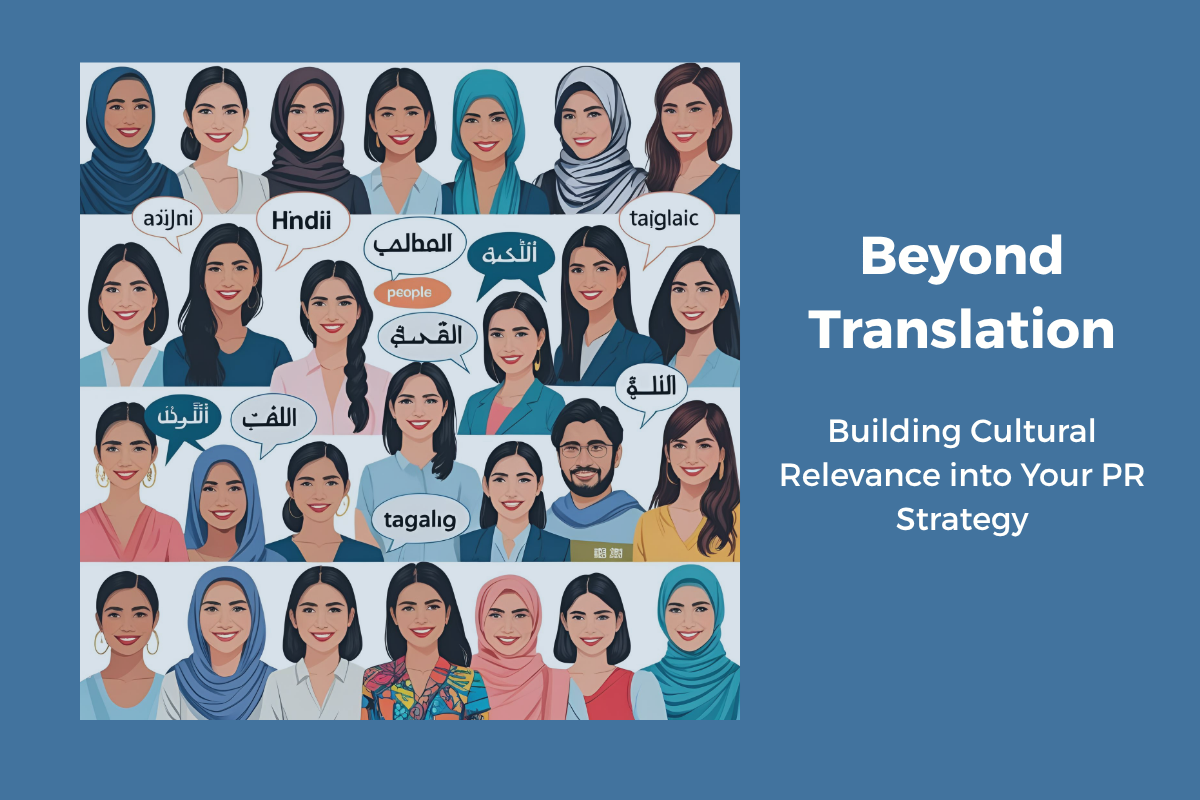In our earlier post, Communicating Across Cultures, we touched on the importance of cultural intelligence in global communication. But what happens when the “global” is right at your doorstep?
Nowhere is this more evident than in the Gulf Cooperation Council (GCC) countries, where local communication teams must speak to an audience that is not just multilingual, but multicultural and, often, multinational. With expatriates making up over 80% of the population in cities like Dubai and Doha, the traditional definition of “localisation” must evolve.
Why Localised PR Matters
The GCC is home to a unique demographic mix: South Asians, Western expats, Arabs from across the region, East Asians, and increasingly, African professionals; all co-existing in relatively small urban centres. A blanket PR message risks alienating many of these communities or missing the mark entirely.
Global research supports this. According to a 2024 study by Edelman, 71% of consumers expect brands to demonstrate cultural relevance in their messaging, and 59% say they are more likely to engage with content that reflects their local identity or values. This is particularly relevant in the GCC where communities engage deeply with content that speaks to their lived realities — not generic messages aimed at a Western audience.
Strategy 1: Start with Micro-Audience Mapping
Don’t treat your GCC audience as a monolith. Instead, segment by nationality, language, professional cohort, or even platform usage. For example:
- South Asian expats may respond better to WhatsApp-based campaigns or regional influencers on Instagram.
- Western professionals might engage more on LinkedIn and prefer thought-leadership content.
- Arab nationals and Arab expats could require Arabic-first messaging with a strong emotional resonance.
Tailor your messaging style, tone, and channel accordingly.
Strategy 2: Culturally-Sensitive Storytelling
Cultural awareness goes beyond translation. It’s about understanding visual symbols, religious sensitivities, family values, and even humour.
For instance:
- Avoid scheduling launches during prayer times or religious holidays unless they’re locally relevant.
- Choose imagery and language that reflect family-centred values — key in both Arab and South Asian communities.
- Be inclusive in your visuals — diverse representations signal belonging.
Another report found that 66% of consumers are more likely to buy from a brand that reflects diversity in its advertising. This applies equally to B2B storytelling, especially in sectors like real estate, retail, or education where buying decisions are often family-influenced.
Strategy 3: Collaborate with Regional Micro and Nano Influencers
Macro influencers may have global reach, but micro and nano influencers have local impact. They speak the language (literally and figuratively) of their community and are seen as more authentic.
In the UAE, for instance, Filipino influencers thrive on YouTube and Facebook, while Arab-speaking influencers dominate TikTok and Snapchat. Partnering with the right voices can amplify your message without the cost (or risk) of celebrity-scale campaigns.
A recent report by YouGov MENA also noted that 78% of social media users in the GCC trust influencer recommendations more than brand ads, particularly when the influencer shares their culture or language.
Strategy 4: Empower Local Spokespersons
Consider building up regional spokespeople who can engage with media in the local language or represent your brand at events targeting specific communities.
In sectors like healthcare, finance, or education, having an Arabic-speaking or South Asian spokesperson on hand can dramatically improve relatability and credibility. These spokespeople need not be internal executives — partners, customers, and community advocates can be just as effective if properly briefed.
Strategy 5: Test, Learn, Refine
Finally, use your analytics. Don’t assume what works in one GCC country will work in another. Oman has a different pace and press culture than the UAE. Saudi Arabia’s Gen Z-heavy population might need a TikTok-led strategy, whereas Bahrain’s tightly-knit business community might respond better to in-person briefings and LinkedIn campaigns.
Experiment with A/B testing — not just for subject lines or images, but for tone, cultural cues, and language as well.
In the GCC, effective PR isn’t just about being visible — it’s about being relevant. As brands seek to deepen engagement across this complex region, localisation must go beyond language. It must reflect an understanding of values, habits, and human nuances.
By investing in culturally intelligent strategies, brands and businesses can build trust, grow awareness, and connect authentically with the communities that drive their success — no matter where they’re from.



